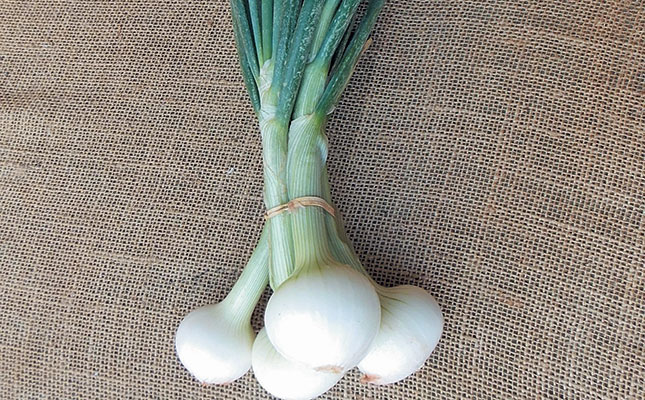
In the Southern Cape, farmers use controlled storage to achieve this; they start off with onions that have a built-in storage capacity and then extend this in controlled environmental conditions.
But there are other, less expensive ways of extending the period of supply in short-day areas.
For the short-day grower, the early market entrant is an early-maturing variety suitable for either sets or direct seeding.
READ Planting dates for onions
Direct seeding requires a relatively dry climate and light daily irrigation until emergence. To keep the soil cool and moist until germination, use either mini sprinklers spaced 5m to 7m apart or micro systems spaced closer together.
A flattish-round, early short-day variety is the earliest on the market. When grown from sets and transplanted in February, it can even be lifted in late April, provided soil and climatic conditions are right. These don’t store well, but why would you want to store them when prices peak at this time?
You can also do direct sowing in February to follow the harvest of set onions. These can be stored for slightly longer to keep customers supplied.
Plant seedbeds in April for late May to July transplanting. The warmer the area, the earlier you can plant and the larger the bulbs you’ll be able to produce if required.
This is an important planting, as you can be on the market for an extended period if you choose the variety carefully. You will need an extra-early one to start marketing in September from transplants and you can then follow with varieties that mature at later stages. You could, for example, plant three different varieties at this time, each maturing a month apart. The last should be the variety with reasonable storage potential.
Space the onions for a specific size
If your customers prefer a specific size, you can achieve this with spacing, as discussed in a previous article. Bear in mind that the later the onion matures, the larger the onions will be. If a certain size is required, the later-maturing varieties must be planted progressively closer together.
Unfortunately, the later- maturing varieties are often sweet, short-storage types. So try to find one that matures in November and stores until late January.
While working for a seed company, I discovered a variety from a New Zealand company that matured into a storage onion on the Highveld in December. There are varieties out there that will enable you to have onions available for marketing all year round.
Green onions
Another option for small rural farmers is green onions. These are harvested before the bulbs reach maturity and are tied into bunches for sale. You can get them onto the market earlier. These onions are usually very tasty. The stems and even the leaves can be used in salads and for cooking, so the customer gets value for money.
While some consumers readily accept green onions, others are a bit more reluctant to try them out, so they should be introduced to the concept gradually. To achieve this, start marketing your onion crop in early April if possible, even if these onions are produced from sets.
For the green onion market and in order to reduce wastage, you can even use onions that have thick necks and look as if they will become bolters.
The above options can improve your cash flow and generate customer loyalty by keeping the market supplied with onions for most of the year.
Bill Kerr is a vegetable specialist and a breeder of a range of vegetables.












